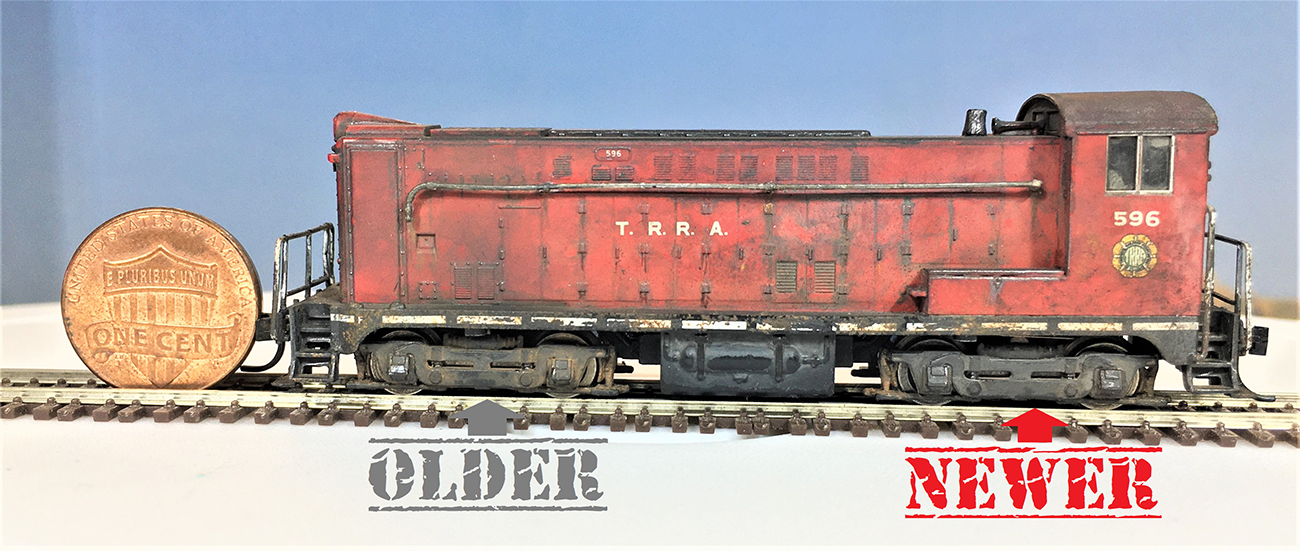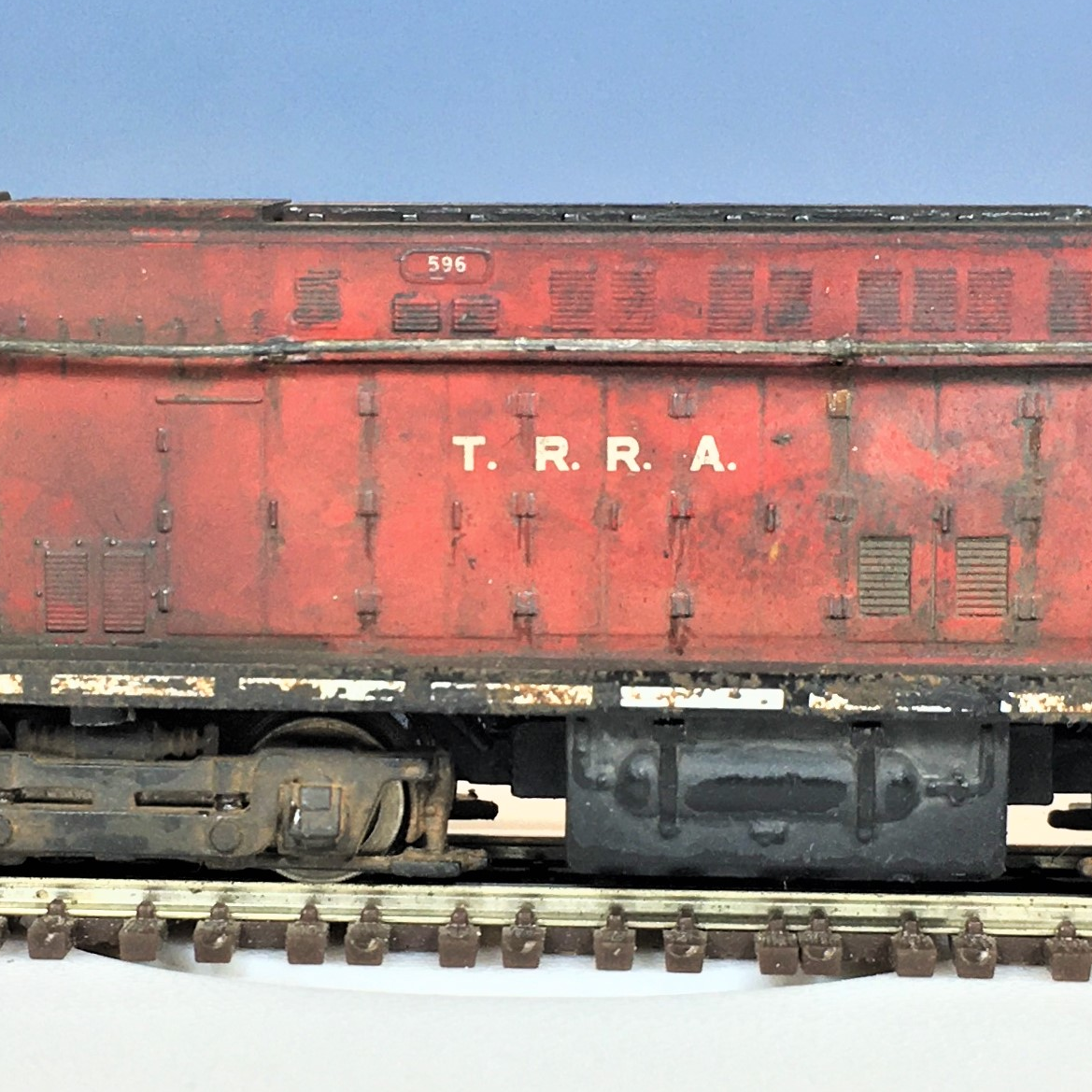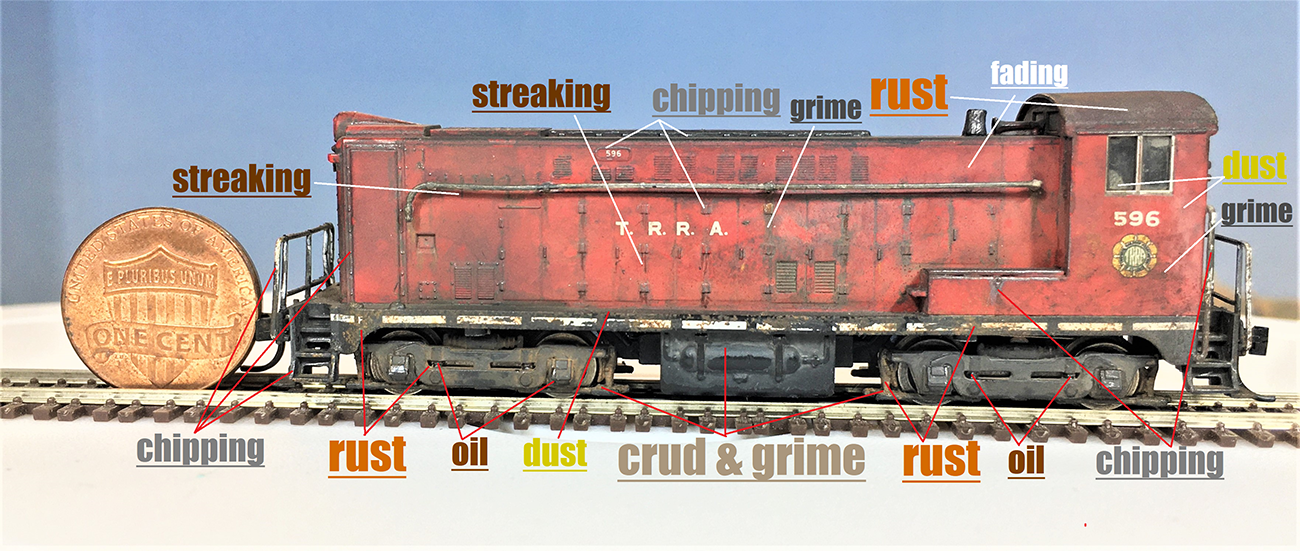Kaustav’s been in touch again with a ‘how to’ on weathering locomotives.
He shows us how he turned a clean looking toy train into a dirty gritty workhorse:
“Hi Al,
Typically I like a challenge when it comes to model making as you already know, but at times it’s OK to take it easy and just be on the ‘relaxed’ mode!
That’s what I did when I weathered my Atlas VO-1000 – a tiny little N scale locomotive that not only runs well, but boasts a lot of fine details.
I feel it is comparable to my all time favorite N Scale switcher locomotive Kato NW-2, except the blocked cab – if only they could make it a proper, see thorugh cab it could be on the top of my list!
Anyway, I wanted an easy, fast, over the weekend job for my next how-to, but I also wanted to do something uncharacteristic of me – really heavy weathering without relying on rust.
Even the most manhandled and poorly maintained locomotives in service didn’t have a lot of rust unless they landed on the graveyard, but they did have other aging like crud, grease, grime, dust, dirt and chipping.
I focussed on these elements for this locomotive to give it a very weathered, ill maintained, yet a revenue earning work horse look. And of course there was the right amount of rust and streaking as well.
I was also lazy enough to set-up my airbrush for this, so I did a a classic wash-pastel-chalk weathering that is within the grasp of almost everyone without any special tools or even skills.
The methods are not only easy, but also forgiving, meaning if you mess it up, it’s easy to ‘wipe’ it and start over.
And as always, a quick video showing how I did it.
Hope you and the folks enjoy this.
Cheers!
Kaustav”
A huge thanks to Kaustav for sending in his weathering locomotives ‘how to’.
I do love his stuff – his models have such character. His vids are just as good too.
If you missed his barge post, it’s here. It really is worth a read if weathering is your thing.
That’s all for today folks.
Please do keep ’em coming.
And don’t forget the Beginner’s Guide is here if you’re tired of everybody else having all the fun.
Best
Al
PS Latest ebay cheat sheet is here.













nice bit of weathering you have achieved there …Dangerous Dave
This is a really good ‘how too’ – thanks
Excellent it looks like a real old engine
You have a keen eye for detail and talent. That is a great combination to achieve truly wonderful results. Thanks for sharing and stay well. Cheers! NJ Mark
Weathering is caused by neglect prototypicaly speaking.
Not a fan.
The Critic
Always a thrill to see Kaustav’s work and artistry.
Many thanks.
George from NY
Excellent looking model. It does look like it’s seen it’s better days but just keeps running 😀
There is always knockers( the critic) but to get such dirtyness on so small project is brilliant keep up the good work
Hi Kaustav – you presented an excellent job of heavy weathering…and without the need for airbrushing! And being an N scaler, I can greatly connect with the difficulty of achieving realism on small model surfaces. The video is truly a fantastic aid for anyone wanting to go the extra mile to achieve realistic weathering effects. Thanks – Arnie, Staten Island, NY
Kaustav –
That really obliterates any hints that this is N Scale. Perfect job – can’t tell out of context whether the loco is N Scale, S Scale or Full Scale!
Next time, give us a “Before” shot, so we can compare!
Fred
What a wonderful tuturol for my first loco attempt today!
thank you for all you do and share with all of us!
Phil
Excellent video and detailing. How long did your process take?
Kaustav, Excellent work.
You captured the look of many American locomotives in their latter days. This is very common on “short lines” in the 1970’s, 1980’s, and 1990’s when “benign neglect” was common.
Even the Southern Pacific (one of our major carriers) was well known for “benign neglect” through its last three decades before becoming part of the Union Pacific. Funny thing there… the Union Pacific was well known for its very clean look UNTIL acquiring the Southern Pacific.
American locomotives are well known for being “rode hard and put away wet” anything sitting around and being cleaned is not earning revenue…
Again, Good Job — Excellent Work.
Exquisite in a dirty grimy way. 👑
Thank you everyone for your kind words and I am really glad that many of you found this helpful. Most of the time I get carried away and make things, for the lack of better word, ‘difficult’ or ‘unrelatable’, but I think the methods I used here will be useful to experienced and beginner alike. If you do try any of these methods, please send some photos over to Al. 🙂
Cheers and stay safe everyone. Keep the positivity alive with your creations. The world today needs positive and creative energy more than ever before. It’s the ‘little things’ that keep the darkness away 🙂
Kaustav
To BBBB ; You will get more money if the item is running and new looking then if it’s weathered.Some people have the nerve selling at a higher price because they think their weathering is great looking. Not! Weathering is fine keep it to your self.Some people who sell know this so they weather with removable powders.fact!
The critic
Very Nice Weathering Job!!
Kaustav, you have provided an excellent video for weathering, especially in N gauge. Mr. Brady, I don’t know what is your problem. If you like shiny plastic, so be it. Kaustav isn’t doing this to sell models but to achieve an effect on his railroad. Model Railroader is full of articles about weathering so this is not unknown b ut regarded as a step for increased realism.